There are many types of medical conditions that require eyelid surgery. Vision Eye Care has experienced Oculoplasty surgeons in Bagdogra who will advise and recommend the best course of treatment for Oculoplastic Surgery.

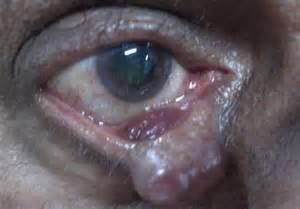
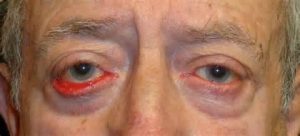
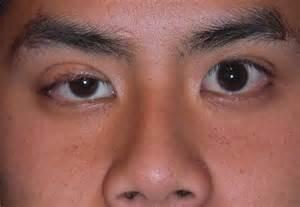
There are various conditions that require a form of eyelid surgery and they are as follows:
Entropion is a condition in which the eyelid (usually the lower lid) folds inward. It is very uncomfortable, as the eyelashes constantly rub against the cornea and irritate it. Genetic factors is usually the main cause of Entropion. This is different from when an extra fold of skin on the lower eyelid causes lashes to turn in towards the eye (epiblepharon). In epiblepharons, the eyelid margin itself is in the correct position, but the extra fold of skin causes the lashes to be misdirected. Entropion can also create secondary pain of the eye (leading to self-trauma, scarring of the eyelid, or nerve damage). The upper or lower eyelid can be involved, and one or both eyes may be affected.
Treatment is a relatively simple surgery in which excess skin of the outer lids is removed or tendons and muscles are shortened with one or two stitches. General anesthesia is sometimes used before local anaesthetics are injected into the muscles around the eye. Prognosis is excellent if surgery is performed before the cornea is damaged. Vision Eye Care’s experienced Oculoplasty surgeons in Bagdogra can conduct Oculoplastic Surgery and can offer all the assistance the patient needs.
Ectropion is a medical condition in which the lower eyelid turns outwards. It can occur due to any weakening of tissue of the lower eyelid. Treatment is surgery where a small part of the affected lid is removed and then the lid is sewn back together.
Ptosis is the medical term for drooping of the upper eyelid — a condition that may affect one or both eyes. When this condition presents since birth, it is called congenital ptosis. Droopy eyelids in general occur when the edge of the upper eyelid (eyelid margin) falls from its normal position.
Ptosis may require surgical correction if severe enough to interfere with vision or if cosmetics is a concern. Treatment depends on the type of ptosis and is usually performed by ophthalmic plastic and reconstructive surgeon, specializing in diseases and problems of the eyelid. Vision Eye Care’s Oculoplastic Surgery Centre in Bagdogra deals with the patients suffering from this condition.
Eyelid tumours are abnormal growths benign or cancerous, around the area of the eye. Surgery treatment depends on the location and the type of growth. Our Best Oculoplastics surgeon in Bagdogra will advise you on how best to remove the tumour.
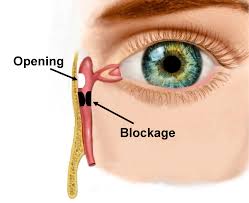
Nasolacrimal duct obstruction (NLDO) can result in a watery eye, due to obstruction of the outflow of tears. Because of age, injury, or chronic disease, the tunnel that drains tears from the eye into the nose can become blocked. Tears may then back up and run down the cheeks and, in some cases, an infection can develop underneath the skin between the eye and the nose (“dacryocystitis”). Many patients complain also of a gooey discharge and eye irritation.
Dacryocystorhinostomy (DCR) surgery is a procedure that aims to eliminate fluid and mucus retention within the lacrimal sac, and to increase tear drainage for relief of epiphora (water running down the face). A DCR procedure involves removal of bone adjacent to the nasolacrimal sac and incorporating the lacrimal sac with the lateral nasal mucosa in order to bypass the nasolacrimal duct obstruction. This allows tears to drain directly into the nasal cavity from the canaliculi via a new low-resistance pathway.
Dacryocystectomy (DCT) surgery involves an initial course of broad-spectrum oral antibiotics followed by DCT surgery whereby the lacrimal sac and any fistulae present were excised. This condition’s surgery is best performed in our Oculoplastic Surgery Hospital in Bagdogra.
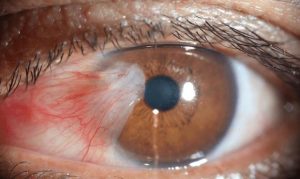
A pterygium is an elevated, wedged-shaped bump on the eyeball that starts on the white of the eye (sclera) and can invade the cornea.
Being in bright sunlight for long hours especially when you are on the water, which reflects the sun’s harmful UV rays increases your risk.
Pterygia are benign (non-cancerous) growths, but they can permanently disfigure the eye. They also can cause discomfort and blurry vision.
When pterygium surgery is required, several surgical techniques are available such as:
Our Oculoplastic Surgeon in Bagdogra who performs the procedure will determine and advise you on the best technique for your specific needs.
Surgery for pterygium removal usually lasts no longer than 30 minutes, after which you likely will need to wear an eye patch for protection for a day or two. You should be able to return to work or normal activities the next day. It’s important to note that pterygium removal can induce astigmatism, especially in people who already have astigmatism.
Unfortunately, pterygia often return after surgical removal, possibly due to oxidative stress and/or continued UV exposure. Studies show recurrence rates up to 40 percent, while others have reported recurrence rates as low as 5 percent. Some research even shows higher rates of recurrence in those who have pterygia removed during the summer months, potentially because of their increased exposure to sunlight.
To prevent regrowth after a pterygium is surgically removed, your eye surgeon may suture or glue a piece of surface eye tissue onto the affected area. This method, called autologous conjunctival autografting, has been shown to safely and effectively reduce the risk of pterygium recurrence.
After removal of the pterygium, the doctor will likely prescribe steroid eye drops for several weeks to decrease swelling and prevent regrowth. In addition to using your drops, it’s very important to protect your eyes from the sun with UV-blocking sunglasses after surgery, since exposure to ultraviolet radiation may be a key factor in pterygium recurrence.